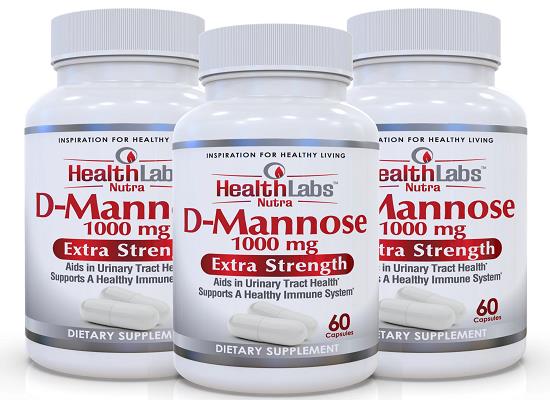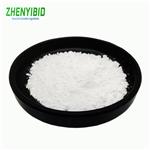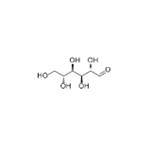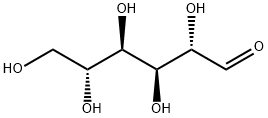D-Mannose: A Potential Natural Remedy for Urinary Tract Infections
Jan 4,2024
General Description
D-Mannose, a monosaccharide found in animal glycans and vertebrate glycoconjugates, plays a crucial role in glycoprotein synthesis and maintaining stable blood mannose levels. It can be obtained from fruits and specific plant polysaccharides, but supplementation may be necessary for adequate levels. Upon ingestion, D-Mannose is absorbed into the bloodstream and reaches peak levels within 60-90 minutes, with a half-life of approximately 4 hours. Excess mannose is rapidly excreted in the urine. Studies have explored its potential in preventing and treating urinary tract infections (UTIs) by blocking bacterial adherence to the urinary tract cells. While early studies show promise in reducing UTI symptoms, more high-quality clinical trials are needed to establish its efficacy and safety.

Figure 1. Capsules of D-Mannose
Origin
D-Mannose (C6H12O6) is a monosaccharide commonly found in animal glycans and vertebrate glycoconjugates. In the human body, D-mannose is primarily synthesized from glucose or derived from the breakdown of endogenous glycoconjugates. It contributes to glycoprotein synthesis, particularly the glycosylation of certain proteins, and plays a crucial role in maintaining stable blood mannose levels for efficient uptake by various cells. Physiological blood D-mannose levels typically range between 50 to 100 μM. While fruits like oranges, apples, and peaches contain small amounts of free D-Mannose, it is also present in the form of galactomannans in coffee beans, fenugreek, and guar gums. However, the bioavailability of mannose for glycan synthesis in these dietary sources is limited and may only be partially improved by anaerobic bacteria in the colon. Overall, D-Mannose can be obtained from natural sources such as fruits and specific plant polysaccharides, but its effectiveness for glycan synthesis may be restricted, highlighting the importance of other sources or supplementation for adequate levels of D-mannose in the body. 1
Pharmacokinetics
D-Mannose is absorbed into the bloodstream from the gastrointestinal tract after ingestion, with an absorption rate approximately 10% of that of glucose. It is primarily absorbed through passive diffusion across the intestinal barrier, although active transport mechanisms have also been identified. Dietary supplementation with D-Mannose in biologically usable forms is an effective way to increase blood D-mannose levels. Studies have shown that a dose level of 0.2 g/kg of body weight is considered the upper limit for daily consumption of mannose for long-term use, as higher doses may cause gastrointestinal disturbances such as diarrhea and bloating. Upon ingestion, D-mannose levels in the blood increase significantly in a dose-dependent manner, reaching peak values approximately 60 to 90 minutes later. Blood levels return to normal physiological levels within 6 to 8 hours, with a half-life of approximately 4 hours. In animal studies, D-Mannose has demonstrated relatively fast absorption from the intestine to the blood, with a half-life in blood of approximately 30 minutes. Less than 1% of administered mannose remains in the intestine, feces, and urine after 4-8 hours, indicating efficient uptake from the intestine. In humans, excess D-Mannose (20-35% of the dose) is rapidly excreted in the urine within 60 minutes. This suggests that D-Mannose has the potential to interact with mannose-sensitive structures of certain bacteria, such as uropathogenic Escherichia coli (UPEC), thereby reducing their pathogenic effects. The renal threshold for mannose is low, as demonstrated by its detection in urine samples even after a single oral dose of mannose. However, mannose supplementation does not significantly affect blood glucose levels. Overall, D-mannose supplementation can effectively increase blood mannose levels in humans, with excess mannose being readily excreted in the urine. 2
Clinical Applications
It has been studied for its potential use in preventing and treating urinary tract infections (UTIs). UTIs are a common condition that affects millions of people worldwide, and certain population groups, such as those with chronic kidney disease or immunosuppression, are at higher risk. The mechanism of action of D-Mannose is to prevent bacterial adherence to the cells lining the urinary tract. Studies have shown that D-Mannose-based inhibitors can block the attachment and invasion of uropathogenic Escherichia coli, the most common bacteria causing UTIs. This inhibition leads to the elimination of bacteria through urination. Early pilot studies on animals and humans have explored the use of concentrated forms of D-mannose, such as tablets or sachets, in doses ranging from 200 mg to 2-3 g. These studies have shown promising results in reducing UTI symptoms or recurrence. However, the number of clinical trials conducted on D-mannose is still limited. A recent review assessed the benefits and harms of D-mannose for preventing and treating UTIs in both adults and children. The review included seven randomized controlled trials involving 719 participants. The studies evaluated the effects of D-mannose in various settings, including perioperative use. However, due to differences in study design and treatments, meta-analyses could not be performed. Overall, the evidence regarding the effectiveness of D-Mannose in preventing and treating UTIs is of very low certainty. Individual studies did not provide clear evidence on the efficacy of D-mannose compared to no treatment or antibiotics. Adverse events associated with D-mannose were rare and mostly mild, such as diarrhea and vaginal burning. In conclusion, while early studies suggest the potential of D-mannose in reducing UTI symptoms or recurrence, more high-quality clinical trials are needed to establish its efficacy and safety. 3
Reference
1. Cooper TE, Teng C, Howell M, Teixeira-Pinto A, Jaure A, Wong G. D-mannose for preventing and treating urinary tract infections. Cochrane Database Syst Rev. 2022 Aug 30;8(8):CD013608.
2. Ala-Jaakkola R, Laitila A, Ouwehand AC, Lehtoranta L. Role of D-mannose in urinary tract infections - a narrative review. Nutr J. 2022 Mar 22;21(1):18.
3. Kyriakides R, Jones P, Somani BK. Role of D-Mannose in the Prevention of Recurrent Urinary Tract Infections: Evidence from a Systematic Review of the Literature. Eur Urol Focus. 2021 Sep;7(5):1166-1169.
- Related articles
- Related Qustion
- D-Mannose: Overview, Clinical Applications in Urinary Tract Infections and Adverse Events Apr 30, 2024
D-Mannose prevents urinary tract infections by inhibiting bacterial adhesion. It's effective with minimal adverse events, mainly mild diarrhea, making it safer than nitrofurantoin.
- D-Mannose: Preparation, Mechanism And Application Studies Apr 18, 2023
D-mannose is an epimer of D-glucose at the C-2 position and the aldose isomer of D-fructose, and it exists in nature as a component of mannan.
- Application and health benefit of D-mannose Feb 16, 2022
D-mannose (or mannose) is a type of sugar found in a number of fruits and vegetables, including cranberries, black and red currants, peaches, green beans, cabbage, and tomatoes. It's also produced in the body from glucose, another form of s
2-Ketoglutaric acid is an important intermediate metabolite with diverse clinical applications in various systems, including the circulatory, locomotion, and endocrine systems.....
Jan 4,2024APICetearyl alcohol is a white granular solid with wax-like odor, used in cosmetics as a thickening agent, stabilizer, and emulsifier. It is non-toxic but can cause mild irritation to the eyes and skin.....
Jan 4,2024APID-Mannose
3458-28-4You may like
- What is the crystal structure of nickel silicide?
May 21, 2024
- What is the crystal structure of chromium silicide?
May 21, 2024
- Crystal Structure of Tantalum nitride
May 21, 2024
- D-Mannose
-

- $0.00 / 1kg
- 2024-04-29
- CAS:3458-28-4
- Min. Order: 1kg
- Purity: 99%
- Supply Ability: 1000 kg
- D-Mannose
-

- $30.00 / 1kgkg
- 2024-04-08
- CAS:3458-28-4
- Min. Order: 1kgkg
- Purity: 99% HPLC,USP Standard
- Supply Ability: 1000KGs
- D-mannose
-

- $0.00 / 25kg
- 2024-03-28
- CAS:
- Min. Order: 25kg
- Purity: 99%
- Supply Ability: Inquiry




